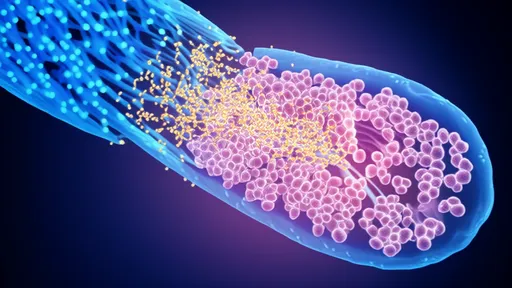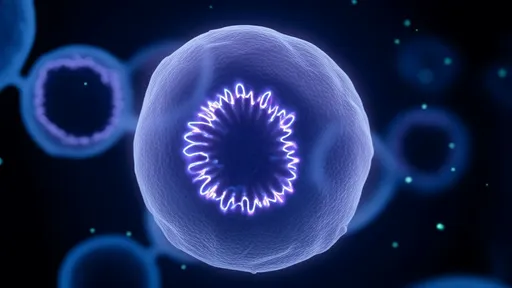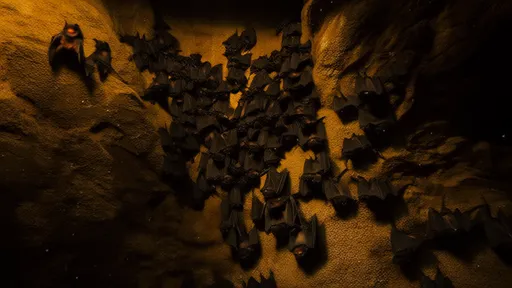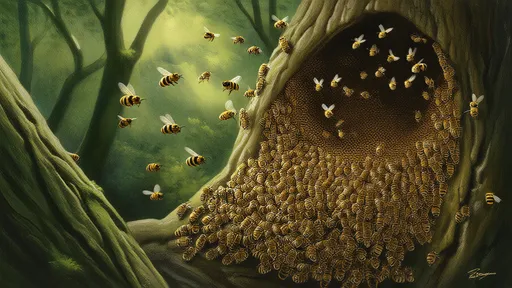In the dense rainforests of New Caledonia, a remarkable phenomenon has captivated ornithologists and cognitive scientists alike. Wild crows have been observed spontaneously manufacturing and using tools in ways that challenge our understanding of avian intelligence. These feathered engineers don't merely employ found objects as tools—they actively create sophisticated toolchains, modifying and combining different implements to solve complex foraging problems.
The discovery began when researchers noticed crows snapping off twigs to create hooked probes for extracting insects from tree bark. What seemed like simple tool use soon revealed deeper layers of complexity. Juvenile crows were observed spending months perfecting their craftsmanship under the tutelage of adults, suggesting cultural transmission of knowledge. The tools weren't random but carefully selected for specific tasks—some twigs were deliberately bent, while others had their leaves trimmed to precise lengths.
What truly stunned scientists was the emergence of tool sequences—where crows would use one tool to access another, then combine them to achieve their goal. In one documented case, a crow used a short stick to retrieve a longer stick from a crevice, then employed the longer stick to reach a food reward. This hierarchical tool use, previously thought unique to primates, indicates advanced planning and cognitive flexibility.
The manufacturing process itself displays astonishing precision. Crows select particular plant species known for their durability and flexibility. They strip leaves and side branches with their beaks, often creating tapered ends or hooks. Some populations have even been observed storing their favorite tools in tree crevices for future use, demonstrating foresight and tool maintenance behavior.
Tool specialization varies between crow communities, suggesting local traditions. While some groups primarily craft hooked tools for insect extraction, others create stepped tools with different diameters for various food sources. This cultural variation implies that tool-making techniques are learned rather than purely instinctual, passing through generations with modifications and improvements.
Neurological studies reveal that tool-making crows possess enlarged basal ganglia regions compared to non-tool-using corvids. This brain structure, associated with skill learning in humans, appears crucial for their technical abilities. When making tools, the crows show lateralized brain activity—similar to human right-handedness—with most individuals preferring their right eye and foot for precision tasks.
The implications extend beyond avian intelligence studies. By observing how tool use emerges spontaneously in wild populations without human intervention, researchers gain insights into how technology might have developed in early hominids. The crows' ability to innovate, combine tools, and transmit knowledge culturally parallels important milestones in human technological evolution.
Conservation concerns have emerged alongside these discoveries. New Caledonian crows face habitat loss, and with it, the potential disappearance of these unique tool cultures. Protecting their forest environment preserves not just a species, but an ongoing natural experiment in cognitive evolution. As scientists continue to decode the mysteries of avian tool manufacture, one thing becomes clear: intelligence takes many forms, and the humble crow has much to teach us about the nature of innovation.

By /Jul 3, 2025

By /Jul 3, 2025

By /Jul 3, 2025

By /Jul 3, 2025

By /Jul 3, 2025

By /Jul 3, 2025

By /Jul 3, 2025

By /Jul 3, 2025

By /Jul 3, 2025

By /Jul 3, 2025

By /Jul 3, 2025

By /Jul 3, 2025

By /Jul 3, 2025

By /Jul 3, 2025

By /Jul 3, 2025

By /Jul 3, 2025

By /Jul 3, 2025

By /Jul 3, 2025